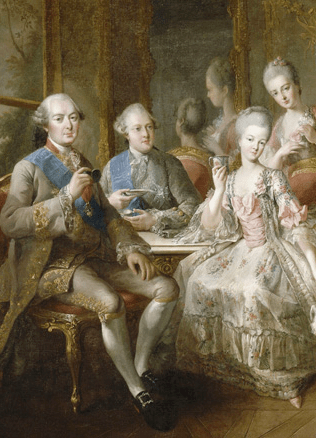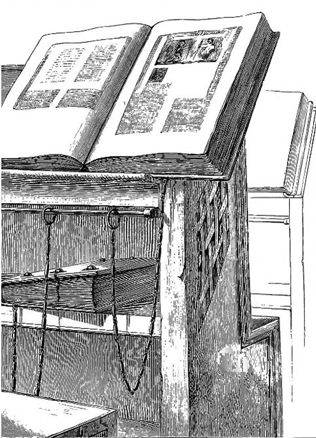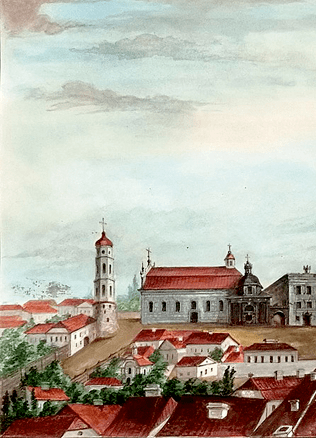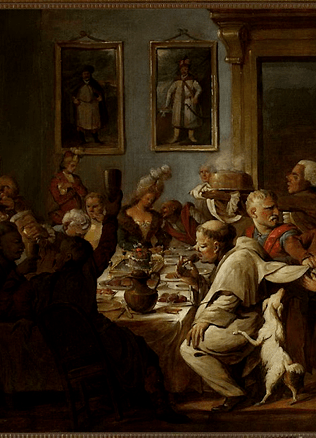Everyday Scenes in the Manor of Kurtuvėnai of the 18th Century
The manor of Kurtuvėnai, in the middle of Samogitia, was a well-known Lithuanian provincial residence of the second half of the 18th century. Casting a glimpse into it reveals typical manor-style life. The manor was run by the Samogitian subcamerarius (the land border dispute judge) Jakub Nagurski.
After inheriting his father’s wealth, Jakub Nagurski (~1734–~1799) became a remarkably rich Samogitian landlord with 810 peasant households in his ownership. The manor of Kurtuvėnai was his main residence and the centre of economic and cultural life where all of his key officials would live, where all reports from his family manors would arrive and where he would welcome his guests and relatives.
It was due to Nagurski’ initiatives that the construction work was a nonstop process in the manor. From 1757 through 1777 a new mill and a demesne were built, the manor hired a number of carpenters and housepainters who changed roofs of most of the manor’s buildings, renewed its servants’ quarter, and repaired the manor’s main building by changing its floors and accomplishing various masonry work. The manor of Kurtuvėnai eventually encompassed a complex of different purpose buildings, such as the main mansion, the servants’ quarter, the treasury, and a number of outhouses, such as barn, storehouse, torch house, kennel, stables, wheelhouse, forges, brewery, kitchen, laundry and icehouse. To obediently meet the humble needs of the Samogitian subcamerarius and his wife, as much as 44 servants were taken in, including housemaids, nurses, lackeys and cooks. Children christening, parties and markets in the nearby town would enliven the routine in the manor.
Gourmet flavours of Kurtuvėnai kitchen
The Nagurski family would set their dining table with sumptuous tableware including crystal glasses and English knives and forks. They consumed different locally-made foods, such as mushrooms, pork fatback, sausages, smoked lamb, beef, Samogitian cheese, sour cream, pickled cabbage, and drank beer.
They enjoyed an abundance of imported foodstuff.
They purchased Westphalian ham, Dutch and Czech cheese and Hamburg-smoked meat in Liepaja as well as the Dutch herring they ate during the periods of fast. Alongside the traditional grits popular throughout Lithuania, the Nagurski family ate English rice and Italian pasta. It was from Liepaja that they imported grey and white salt used for daily consumption and food conservation.
The kitchen of the Kurtuvėnai manor would produce plenty of different scents because a number of spices were used for cooking including pepper, nutmegs, white and grey highland ginger, cinnamon, capers, coriander, laurel leaves, fresh olives and cardamom. Spices such as rosemary, lavender, anise, and orange peels added even more scents to the cuisine. The members of the family would indulge themselves in different kinds of raisins, figs, dried oranges, fresh lemon, melons, French plums, fresh sweet highland almonds, pistachios, nuts and conkers. They would pamper themselves with coffee, several varieties of Chinese green tea and Venetian or Italian chocolate after the meals. Sometimes they would drink English beer, arak, and the French Beaujolais. They drank wines from Bretagne, Porto, or Pontak, in Indonesia. The varying menu and imported luxurious drinks attest the gourmet traditions of the owners of the manor in Kurtuvėnai.
The rhythm of life in a provincial manor
Letters and newspapers were the two “channels” to deliver the news into the manor. Letters usually contained private information although quite often they included discussions on official and administrative issues. The Kurtuvėnai manor served as an important centre of correspondence in Samogitia because Jakub Nagurski would receive letters both from his representatives in the neighbouring locations and from the top-ranking officials of the Grand Duchy of Lithuania. Newspapers, handwritten and printed, delivered by post represented another important source of information. Jakub Nagurski was a subscriber and reader of the Utrecht Newspaper, the Dutch publication considered progressive in Western Europe of the time; he also read the Polish Courier, the Warsaw News, and the Lithuanian Courier. This shows that the news about the developments in Europe would reach the manor in Kurtuvėnai regularly.
Jakub Nagurski was a pious person, influenced in this respect largely by his closest kin who were also very religious, such as his wife Marijona, his brother Laurynas and his sister Rožė (Liudgarda) who eventually joined the Benedictine nunnery in Kražiai. That is why the liturgical hours had significant impact on daily activities within the manor. The liturgical tradition proved to be important. Nagurski asked the Bishop of Samogitia, Stefan Giedroyć, to absolve him from long lent fasting for one week in 1786 because he was unwell.
The liturgical calendar had an impact on a daily life for everyone in the manor as well.
In the periods of Advent and lent the menu would become simples and no parties would take place. The owners of the manor would even organise the unconventional exposition and adoration of the Blessed Sacrament alongside other religion-related events. It was in 1766 that Jakub’s wife Marijona set off on a pilgrim trip to Częstochowa in Poland to visit the miraculous picture of the Virgin Mary. The building of a new stone and brick church in Kurtuvėnai started in 1785 and lasted until 1796.
The Kurtuvėnai manor of the late 18th century offers an exceptional and dynamic picture of the provincial nobleman who lived a full-blooded life that included parties, finest dishes, and international news. The life, however, often had to be adjusted to the liturgical traditions.
Literature: Kurtuva: Kurtuvėnų regioninio parko metraštis, 2002–2005 m., nr. 8 (Nagurskiai. Garsios bajorų giminės istorija ir palikimas), Kurtuvėnai, 2006.
Jonas Drungilas



